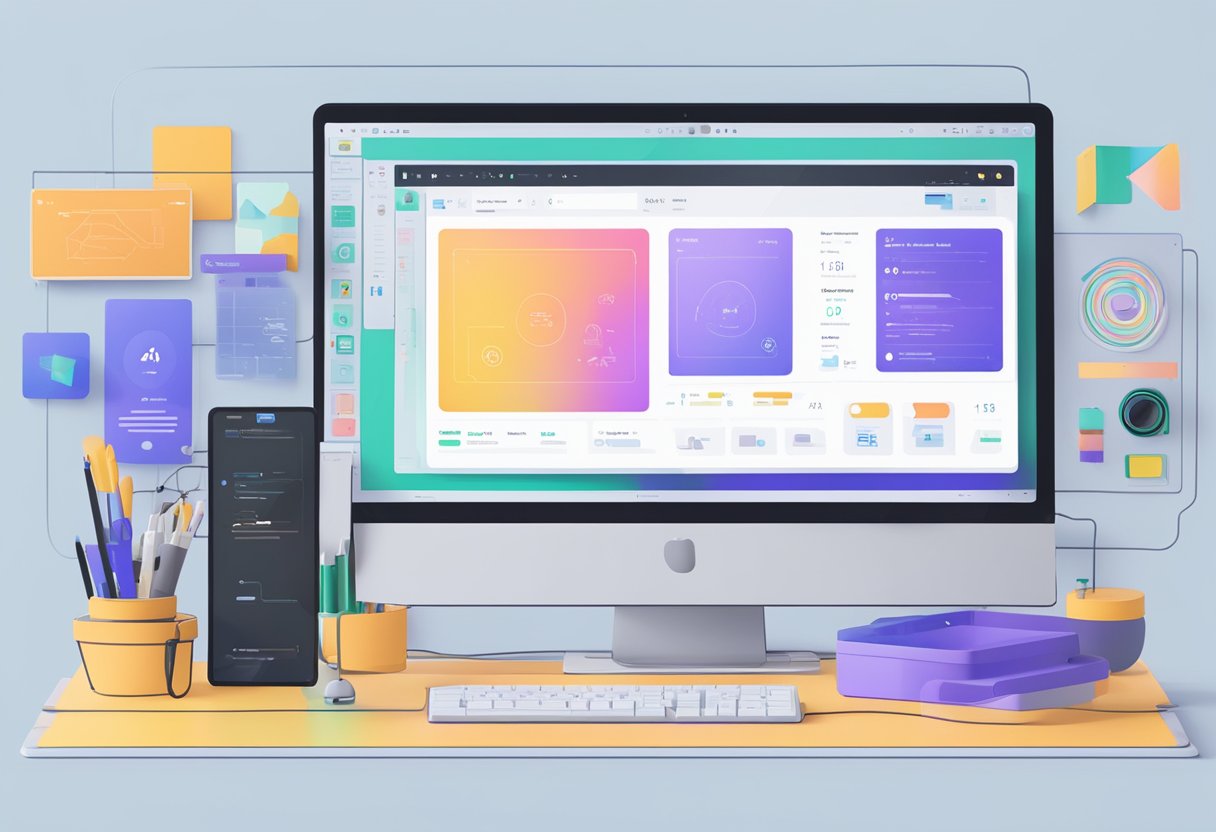Back in 2015, there was no specified process to optimize the browser. So when Flutter came in, it revolutionized cross-platform development by supporting six platforms in a single codebase. The most exciting feature of flutter is its language, which is Dart.
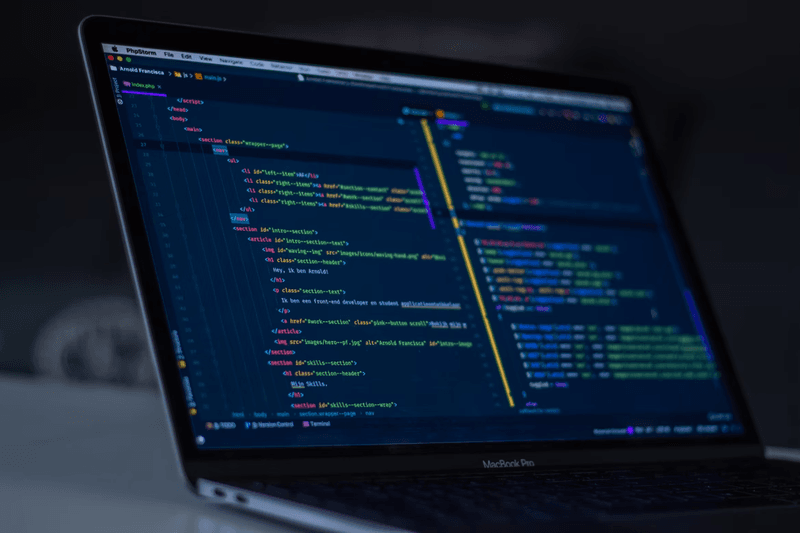
Flutter has steadily grown in recent years, expanding its capabilities to include iOS and Android mobile development and web and desktop applications. With Flutter, anyone can create a complex UI with just a few simple widgets and minimal effort.
The core feature of flutter is Dart. It works with widgets to structure the UI. Before starting with flutter, you should be familiar with the dart programming language.
In this article, we are listing all the essential aspects of Dart to help you get started with your development with flutter.
Table of Contents
- What Is Flutter?
- What Are The Features Of Flutter?
- What Is Dart?
- What Are The Features Of Dart?
- What Are The Coding Characteristics In Dart?
- What Are The Dart Libraries?
- Why Dart Is Used In Flutter?
- How Does Flutter Work With Dart?
- Wrapping Up
TLDR
- Google's Flutter is an open-source user interface software development kit. From a single codebase, it's possible to create apps for Android, iOS, Linux, Mac, Windows, Google Fuchsia, and the web. You can develop applications for multiple platforms by writing a single project with only minor modifications.
- Flutter's use of the Dart programming language is one of its most interesting features. Dart comes with a library of software packages that can enhance the functionality of apps.
- Developers prefer dart programming for flutter because it is easy to learn and has user-friendly functionalities.
What Is Flutter?
Google introduced Flutter as an open-source technology for coding and developing native Android and iOS apps. Studies show 2 million users, and Flutter has undoubtedly established itself as a leading platform for developing stunning native apps.
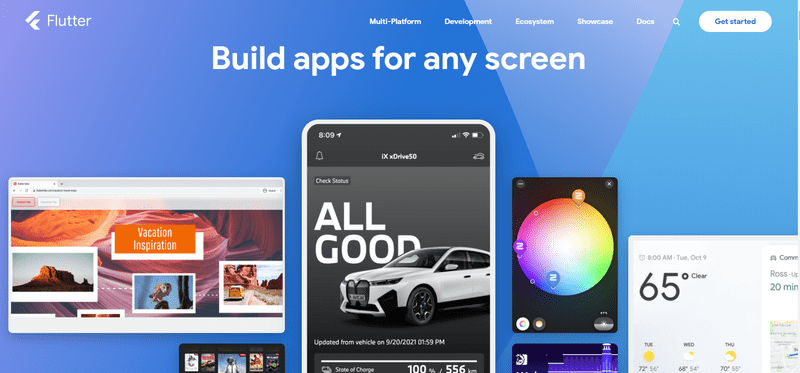
Flutter also comes with several ready-to-use widgets (UI) for building a modern app. These widgets are mobile-friendly. Thus, creating an application with them is as simple as creating an HTML page.
Specifically, Flutter is a lightweight, high-performance framework based on the Dart programming language. It achieves this by rendering the user interface directly on the operating system's canvas rather than using a native framework.
The components of Flutter includes:
- Dart (programming language)
- Flutter Engine
- A rendering support layer
- Foundation Library (for fundamental app operations)
- Widgets (app’s visual blocks)
What Are The Features Of Flutter?
The Flutter framework provides developers with the following features:
- The framework is both modern and responsive.
- It uses the Dart programming language, which is easy to grab.
- Rapid development.
- User interfaces that are both stunning and fluid.
- A large selection of widgets.
- The user interface is the same for multiple platforms.
- High-performance application.
What Is Dart?
Dart is a Google invention. It's a programming language for creating flutter-based mobile applications. Flutter apps are popular among app developers because the Dart programming language is simple to learn and use.
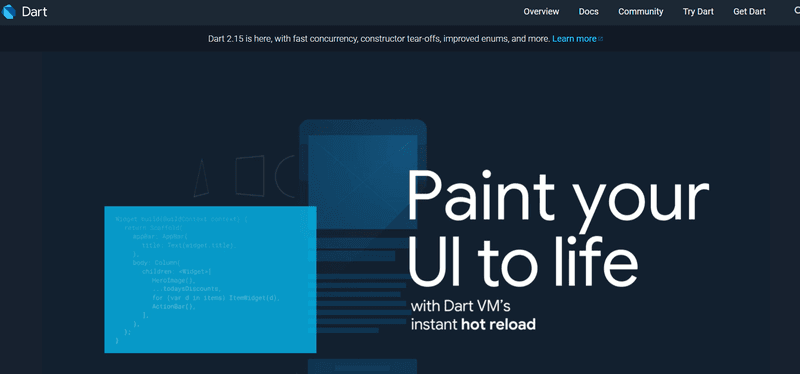
Dart is an object-oriented programming language that resembles C. So if you prefer C or Java, then Dart is for you. You'll be able to use it efficiently. Dart is a programming language and a mobile app development platform.
What Are The Features Of Dart?
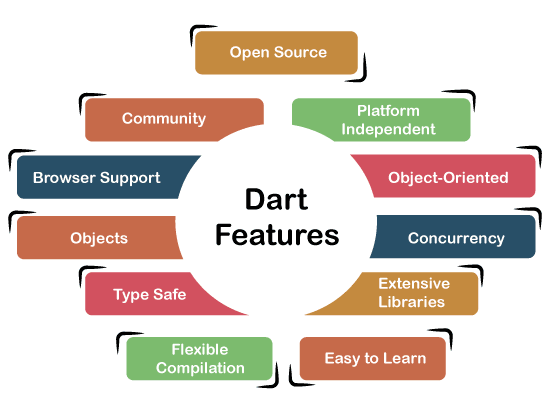
- Dart is a fast, predictable native code. Furthermore, it makes it possible to write almost all Flutter in Dart. This speeds up Flutter and allows for a lot of customization.
- Dart makes it easier to create smooth animations and transitions. Dart can do garbage collection and object allocation without using locks. Flutter apps do not require a slow bridge between realms.
- Because Dart's declaration and programmatic layout are easy to read and visualize, Flutter can avoid using a separate layout language.
- Dart is particularly easy to learn for developers because it contains features familiar to users of both static and dynamic languages.
- Dart employs a sophisticated generational garbage collection and allocation scheme that is especially effective for allocating many small objects.
- Another advantage of Dart is that it doesn't require separate visual layout tools or split layout between your program and an additional templating or layout language.
- In Flutter, all static or programmatic layout is has a single location.
- There are over 3000 packages in the public Dart package repository, including libraries for Firebase, Redux, RxDart, internationalization, encryption, databases, routing, collections, and more, and the external committers Dart itself.
- Dart libraries and tools are excellent and well documented.
- Dart is an excellent client-side language that makes it a better language for use on the server-side.
What Are The Coding Characteristics In Dart?
- The main() method is where a Dart class begins.
- Most data types have null as their default value.
- Dart classes only allow for a single level of inheritance. Therefore, a class can only have one superclass, but it can have multiple implementations of Interfaces.
- Certain statements, such as if conditions, loops (for, while, and do-while), switch-case, break, and continue statements, all have the same flow control.
- Abstraction allows abstract classes and interfaces to be created.
- All data types, including numbers, are objects. As a result, if left uninitialized, their default value is null rather than 0.
- The return type of method is not needed.
- Any numeric element, both real and integer, is declared by the type num.
- The super() method is only called at the end of the constructor of a subclass.
- The keyword new, which is used before the constructor to create an object, is optional.
- A default value for the parameters passed can be specified in the method signature.
- Runes is a new built-in data type that deals with UTF-32 code points in a string.
What Are The Dart Libraries?
Dart comes with a set of core libraries that developers can use to perform common tasks. The following is a list of Dart's core libraries:
- Built-in types and collections (dart:core)
- Files, HTTP, and other I/O support for non-web applications (dart:io)
- HTML resources for (DOM) interaction. (dart:html)
- Encoders and decoders including JSON and UTF-8 (dart:convert)
- Mathematical constants, functions, and randomness (dart:math)
- Support for asynchronous programming (dart:async)
- Fixed-sized data (i.e. unsigned 8-byte integers) (dart:typed_data)
- Concurrent programming using isolation (dart:isolate)
- Additional collection types such as queues, linked lists, hashmaps, and binary trees (dart:collection)
Why Dart Is Used In Flutter?
Dart is undoubtedly becoming the preferred language for flutter developers. DartPad is another online editor that allows you to run Dart code without installing or configuring anything. It's effortless to run code; all you have to do is type it in and press the "Run" button. The output is also displayed within the DartPad window.
With attractive animations, delightful motions, high-fidelity, and amazing performance-interactive-UIs, game development with Flutter can be done quickly and easily. Flutter is the gaming industry's portable solution. It helps us write and compile user interface codes in Dart so that we can create beautiful apps for iOS, Android, and the web. It also has some gaming features, such as single-code game development, single, double, and multiple gaming services, 2D and 3D game development, and so on. As a result, flutter has made game development easier, faster, and more productive.
How Does Flutter Work With Dart?
The Flutter engine, Foundation library, and widgets are all part of the Flutter framework written in the Dart programming language. Flutter's approach to development differs from others in that it uses declarative UI writing. There is a need to start from the end here, which means that before beginning to develop an element, the user must have a complete picture of what kind of UI it will be. Many developers consider this UI writing to be more concise, but it does present some challenges for developers at first.
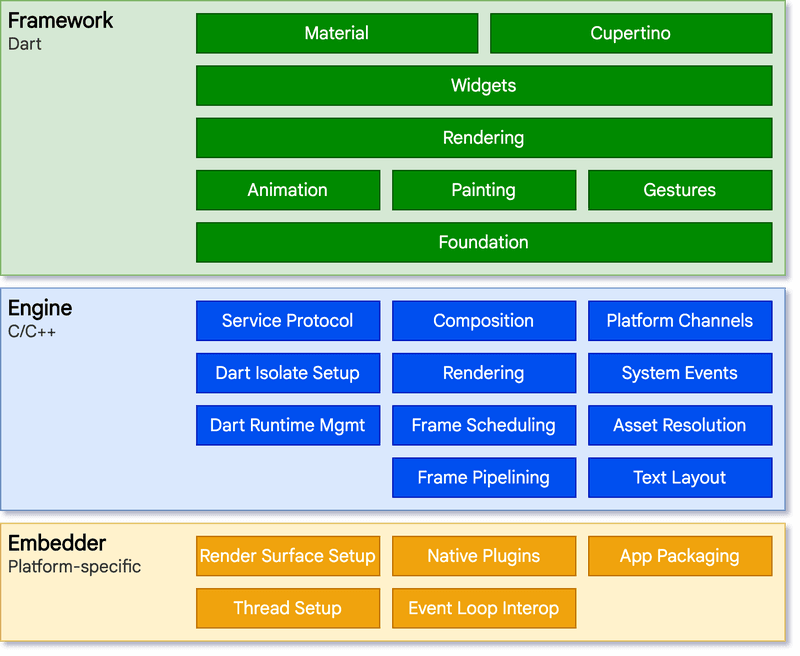
Flutter's main idea is that developers can create an entire user interface by simply combining various widgets. The application interface comprises nested widgets that can be any type of object. This applies to everything from buttons to padding, and the developer can drastically customize the app by combining widgets.
Widgets can interact with one another and respond to external changes in the state using built-in functions. Therefore, widgets are important parts of the user interface that adhere to the design guidelines for Android, iOS, and traditional web apps.
Flutter also allows developers to view widgets in a reactive manner. Flutter isn't the first to do this, but it is the only mobile SDK that does so without using a JavaScript bridge.
Dart also includes a repository of software packages that can enhance the capabilities of applications. For example, it provides a number of packages that make it easier for developers to connect to Firebase and build several applications. Another package grants access to the Redux data warehouse or makes platform services and equipment, such as cameras, more accessible.
Wrapping Up
Flutter is one of the most innovative mobile technologies available today. Because of its benefits to development teams; it is a top candidate to become the mobile technology of choice in the near future.
Flutter's ability to cater to six different platforms with a single codebase is the main reason for its higher ranking than other similar frameworks. So, are you looking for a Flutter development team?
Don’t Worry! FigmaFy has flutter specialists who know how to make the most out of your development project. In addition, it has an integrated platform that allows you to overview your project seamlessly.
So, what are you waiting for? Get started with FigmaFy and optimize your projects effortlessly.


